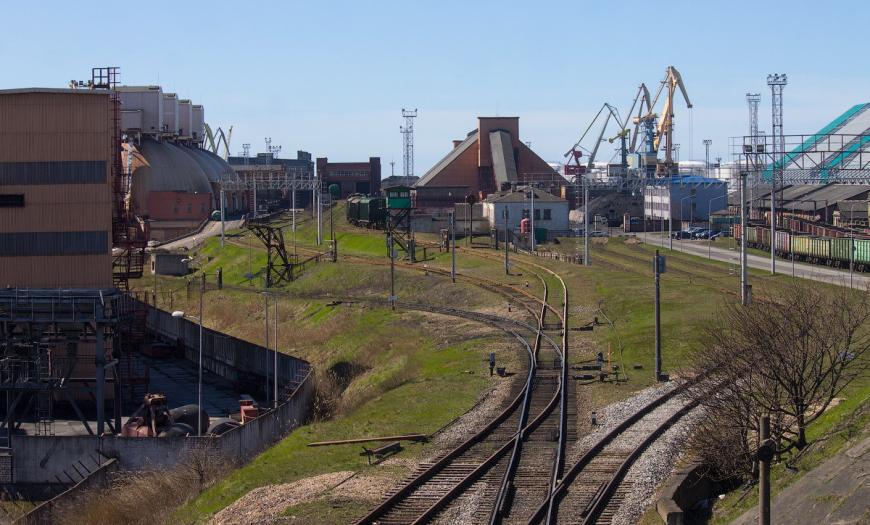During the Soviet period, Lengiprotrans took an active part in the transport development of railway approaches and stations at the seaports in the Baltic States. For the development of the Ventspils station, the institute has designed an overpass in the railway park located in the Ventspils port area.
Ventspils is an out-of-class railway station on the Ventspils - Tukums II line in the city of the same name in Latvia. It was opened in 1901 with the original name Vindava. The station carries out the transit of goods from the seaport to the railroad.
The port of Ventspils in terms of transit volume is one of the leading ports in the Baltic Sea. At the end of the 19th century, it was the first of the ports on the Baltic coast to be connected by rail to Moscow. In the 1960s, oil products from the oil-producing regions of the USSR were reloaded through Ventspils. Also, large transshipment terminals for liquid chemicals, ammonia and potassium salts were built at the port. In the future, there was the development of Ventspils as the leading center of the USSR for the export and processing of petroleum products.
In the overpass complex, a highway overpass and an exit overpass in the direction of Riga were designed. The development was complicated by the fact that the structure had to be located in the conditions of dense urban development and a railway station. This largely predetermined the choice of the cross-section beam system of the overpass and overpass with the ability to implement construction at a lower height.
The overpass is designed for four lanes of traffic.
The width of the structure is about 20 m, the length is 182 m.
The length of the overpass is 72 m, the dimension of the carriageway is 7 m.
Author's department:
Project Status:


